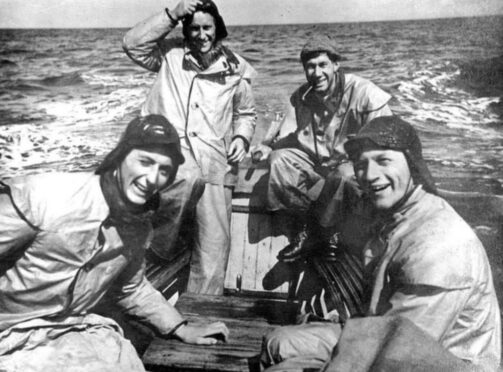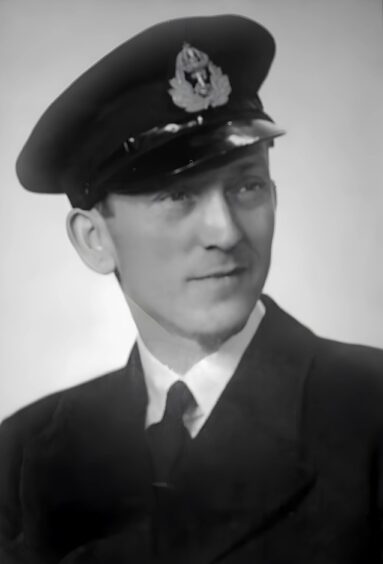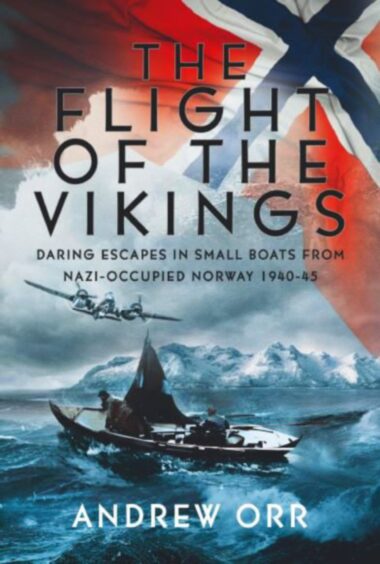
When the Nazis invaded Norway during the Second World War, many looking to flee the brutal occupiers looked back to their Viking ancestry and knew what to do.
As Hitler’s forces descended on the neutral country in the first half of 1940, over 4000 people took to small boats to cross the North Sea to Scotland and join up with forces there, determined to one day return to avenge their oppression.
Most of the boats were small inshore fishing vessels, but some were far from shipshape for the rough seas, including a 15ft boat rowed for over 200 miles by one man and a 16ft two-man sealskin kayak.
Newly discovered tales are part of a new book by former GP-turned-historian Andrew Orr, The Flight of the Vikings, which tells of the daring escapes and what drove young Norwegians to risk capture whilst taking on a cruel sea.
“These were outstanding people,” Andrew said. “I had an absolute obligation to tell these stories because I’ve been in contact with quite a lot of families and I know many people in Norway were really needing to know these stories.
“There are great parallels here to Ukraine and what’s going on at the moment. The Germans thought that they could walk into Norway and turn it into an Aryan paradise.
“They had no idea how fiercely the Norwegians would oppose them. The people who escaped formed the nucleus of the fight back and the resistance was entirely supplied and trained by them.”
In the book, Andrew, 78, recounts tales such as the journey of journalist Knut Vidnes, who was part of a group who fled Norway on a fishing boat.
They managed to evade a German patrol boat but severe storm damage forced their return home with a makeshift sail.
On their next attempt, they had almost made it to Lerwick when a plane arrived overheard. They feared the worst, but then spotted the RAF markings and would eventually make it to safety.
Another remarkable escape involved two men paddling a kayak past Nazi guards and eventually being rescued at sea by the Royal Navy.
And the Haabet, an 18 foot boat named after the Norwegian word for hope, had a lengthy journey blown back an forth across the water.
“They had a very bad crossing,” Andrew explained. “Just off Aberdeen, they were spotted by an RAF plane which radioed to get help and they put a destroyer out of Aberdeen.
“But a storm sent the destroyer back into harbour and the boat was blown right back across to Denmark.
“They lost the mast and boat was just a floating wreck. They rebuilt it and set out again and hit another huge northerly storm.
“They ended up unconscious, floating in the Thames estuary, where they were rescued. That’s an example of extraordinary resilience.”
One of the men, Oluf Reed Olsun, went on to become a decorated war hero for his intelligence work with MI6.
The bravery of those who escaped led to many of them being recruited to the Norwegian special forces, and some become involved in the Shetland Bus, the clandestine transport route set up using the escaped boats between the UK and Norway to supply the resistance.
Others became part of Kompani Linge, the special unit who carried out the top-secret sabotage mission targeting the Vemork Hydro plant where the Germans were producing ‘heavy water,’ used in the process of creating nuclear energy.
As dramatised in 1965 war film The Heroes of Telemark, it was a pivotal moment in stopping the Nazis creating an atomic bomb.
“All the people involved in that raid were young people who had escaped from Norway in small boats,” Andrew said.
Of course, not all escapes were successful, and not just due to the weather.
“A very small number of people caused the most incredible amount of damage,” Andrew said. “They pretended to be escapers, and then they betrayed them straight to the Gestapo.
“They loved to catch them red handed, a cat and mouse game.
“Out at sea too, the Luftwaffe would find them and bomb and machine gun them.”
The book involved a lot of detective work. Drawing on research by two Norwegians, escapee and war hero Ragnar Ulstein and amateur historian Siri Holm, Andrew managed to add around 70 completely unknown escapes to the 290 already documented. He traced around 4000 Norwegians who had made the crossing.
“In wartime everything was pretty hush hush, so the actual stories of arrivals are few and far between,” he said.
“There was an immediate threat that information would get back to Norway. The Nazis were absolutely ruthless at rounding up people and punishing them.
“If members of their family had escaped and they’d helped them, they faced execution.
“Putting it together, I’ve looked at thousands of personal things. The British Newspaper Archive was also very helpful. I went through page by page of the war.
“My curiosity led to a compulsion and then it became an obsession. I started a database and then I really was left with an obligation.
“There were individual stories and rudimentary lists kept in Norway, but nobody had told the stories. And I’m a storyteller. I eventually got to the stage of being so old I actually had to start writing it!”
The Flight of the Vikings by Andrew Orr is available now from Pen & Sword Books

Enjoy the convenience of having The Sunday Post delivered as a digital ePaper straight to your smartphone, tablet or computer.
Subscribe for only £5.49 a month and enjoy all the benefits of the printed paper as a digital replica.
Subscribe © PETER DIBDIN
© PETER DIBDIN © Vidnes Family
© Vidnes Family © Andrew
© Andrew